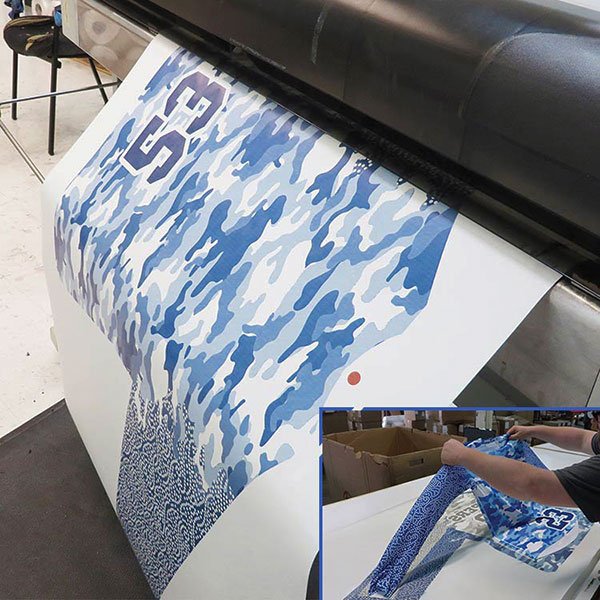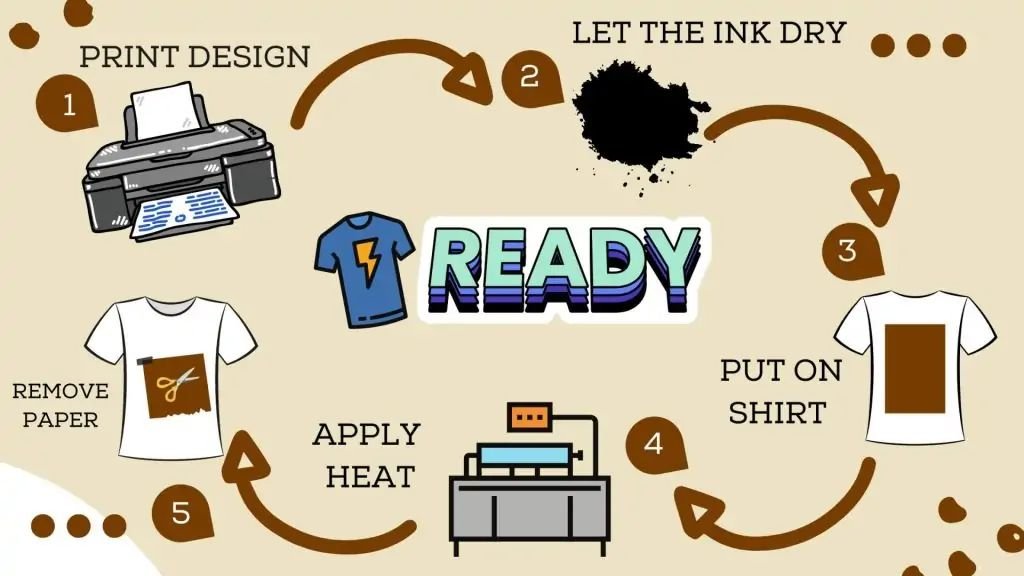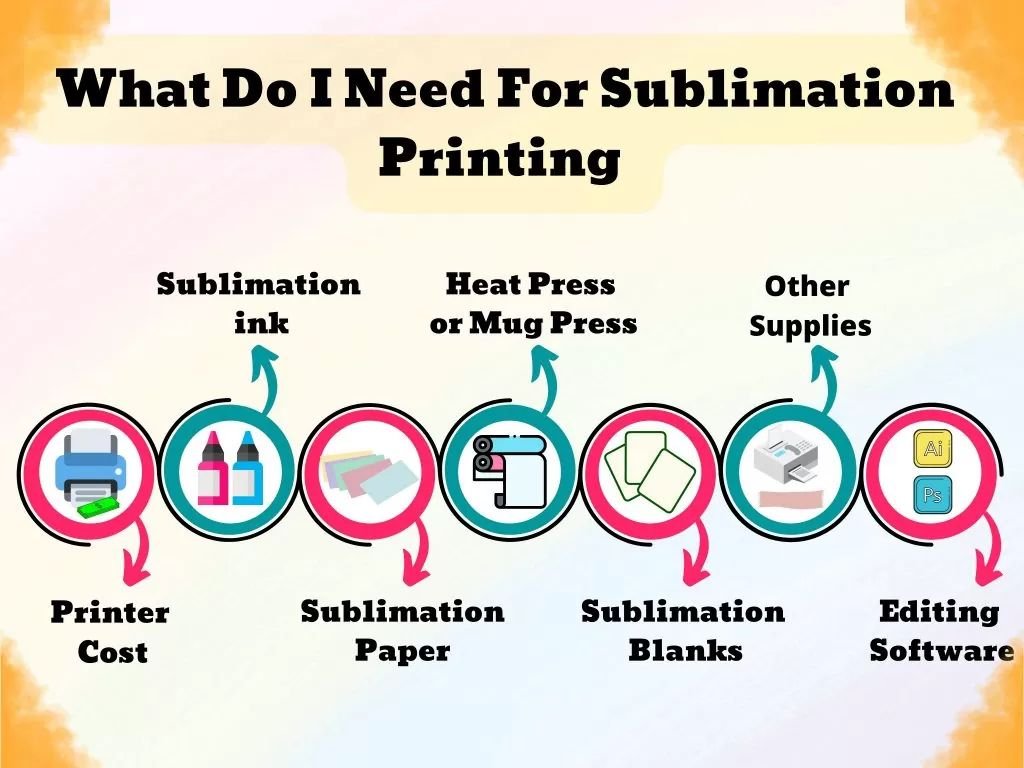No products in the cart.
Custom Yoga Pants
Pros and Cons of Sublimation Printing: Is It Right for Your Business?
Introduction to Sublimation Printing
Sublimation printing is a popular method used in the textile and promotional products industry to transfer designs onto various materials, such as fabrics, ceramics, and metals. It involves the use of heat and pressure to convert solid dye particles into a gas, which then permeates the material and solidifies, resulting in vibrant and long-lasting prints. This article will explore the pros and cons of sublimation printing and help you determine if it is the right choice for your business.

Pros of Sublimation Printing
1. Vibrant and Long-lasting Prints: Sublimation printing offers exceptional color vibrancy and durability. The dye particles penetrate the material’s fibers, resulting in prints that are resistant to fading, cracking, and peeling. This makes it an ideal choice for products that require frequent washing or exposure to harsh conditions.
2. All-over Printing: Unlike traditional printing methods, sublimation allows for full-color, all-over printing. This means you can cover the entire surface of a product with your design, creating eye-catching and unique products that stand out from the competition.
3. Unlimited Color Options: Sublimation printing allows for an unlimited range of colors, including gradients and photographic images. This gives you the freedom to create intricate and detailed designs that accurately represent your brand or customer’s vision.
4. Quick Turnaround Time: Sublimation printing offers fast production times, making it suitable for businesses that require quick order fulfillment. The process is relatively simple and can be automated, allowing for high-volume production without compromising quality.
5. Cost-effective for Small Batch Orders: Sublimation printing is cost-effective for small batch orders since there are no setup costs or minimum order quantities. This makes it an attractive option for businesses that cater to niche markets or offer personalized products.
6. Versatility: Sublimation printing can be used on a wide range of materials, including polyester fabrics, ceramics, metals, and more. This versatility allows businesses to diversify their product offerings and cater to different customer preferences.
7. Customization: Sublimation printing enables customization on an individual level. Whether it’s adding names, numbers, or unique designs, you can easily personalize products to meet your customers’ specific requirements. This level of customization can help you attract and retain customers who value personalized products.
8. Eco-friendly: Sublimation printing is considered more environmentally friendly compared to traditional printing methods. It produces minimal waste, as the dye particles are fully absorbed by the material, leaving no residue or excess ink. Additionally, sublimation inks are water-based and do not contain harmful chemicals.
9. High Profit Margins: Due to its ability to produce high-quality and customized products, sublimation printing can command higher profit margins compared to standard printing methods. This can be particularly advantageous for businesses operating in competitive markets.
10. Growing Market Demand: The demand for personalized and unique products is on the rise. Sublimation printing allows businesses to tap into this growing market and offer products that stand out from mass-produced alternatives.
Cons of Sublimation Printing
1. Limited Material Compatibility: Sublimation printing is only suitable for materials that have a high polyester content or are specially coated to receive the dye. This limits the range of materials that can be used, excluding natural fibers such as cotton and certain synthetic materials.
2. Initial Investment: Setting up a sublimation printing system requires an initial investment in equipment, including a heat press, printer, and sublimation inks. While the cost has decreased over the years, it can still be a significant investment for small businesses or startups.
3. Learning Curve and Skill Requirements Sublimation printing requires some technical knowledge and skill to achieve optimal results. Understanding color management, heat press settings, and proper image preparation are essential for producing high-quality prints. This may require training or hiring skilled personnel, adding to the overall cost.
4. Limited Color Range on Dark Materials: Sublimation printing works best on light-colored materials, as the dye is transparent and relies on the material’s color to create the final print. Dark-colored materials can limit the color range and result in less vibrant prints.
5. Production Speed and Efficiency While sublimation printing offers quick turnaround times for small orders, it may not be as efficient for large-scale production. Each item needs to be individually printed, which can slow down the production process compared to other printing methods.
6. Cost Considerations While sublimation printing can be cost-effective for small batch orders, it may not be as economical for large quantities. The cost of sublimation inks and materials can be higher compared to traditional printing methods, especially when producing large volumes.
7. Quality and Durability of Materials: The quality and durability of the materials used in sublimation printing can vary. Lower-quality materials may not hold up well to repeated washing or exposure to harsh conditions, affecting the longevity of the prints.
8. Limited Color Accuracy: Achieving precise color matching can be challenging with sublimation printing. The final print may not always match the colors seen on a computer screen or in a physical sample, leading to slight variations in color accuracy.
9. Heat Press Limitations: Sublimation printing requires the use of a heat press, which can have size limitations. Large or irregularly shaped products may not fit into a standard heat press, limiting the range of products that can be printed using this method.
10. Market Demand and Competition While there is a growing demand for personalized products, the market can also be highly competitive. It’s important to assess the market demand and competition in your specific niche before investing in sublimation printing equipment.
Cost Considerations
When considering sublimation printing for your business, it’s essential to evaluate the cost implications. While sublimation printing can be cost-effective for small batch orders, the initial investment in equipment and ongoing costs for inks and materials should be taken into account. Additionally, the cost per print may be higher compared to traditional printing methods, especially for large quantities. It’s crucial to conduct a cost analysis and determine if the potential profit margins outweigh the expenses.
Quality and Durability
One of the significant advantages of sublimation printing is the exceptional quality and durability of the prints. The dye particles become part of the material, resulting in prints that are resistant to fading, cracking, and peeling. This makes sublimation printing suitable for products that require frequent washing or exposure to harsh conditions. However, it’s important to consider the quality and durability of the materials used in sublimation printing. Lower-quality materials may not hold up well over time, affecting the longevity of the prints.
Versatility and Customization
Sublimation printing offers versatility in terms of the materials that can be printed on. It can be used on polyester fabrics, ceramics, metals, and more, allowing businesses to diversify their product offerings. This versatility enables businesses to cater to different customer preferences and expand their market reach. Additionally, sublimation printing allows for customization on an individual level. Whether it’s adding names, numbers, or unique designs, you can easily personalize products to meet your customers’ specific requirements. This level of customization can help you attract and retain customers who value personalized products.
Production Speed and Efficiency
Sublimation printing offers quick turnaround times for small batch orders, making it suitable for businesses that require fast order fulfillment. The process is relatively simple and can be automated, allowing for high-volume production without compromising quality. However, it’s important to note that sublimation printing may not be as efficient for large-scale production. Each item needs to be individually printed, which can slow down the production process compared to other printing methods. It’s crucial to assess your production needs and determine if sublimation printing can meet your desired production speed and efficiency.
Environmental Impact
Sublimation printing is considered more environmentally friendly compared to traditional printing methods. It produces minimal waste, as the dye particles are fully absorbed by the material, leaving no residue or excess ink. Additionally, sublimation inks are water-based and do not contain harmful chemicals. This makes sublimation printing a greener option for businesses looking to reduce their environmental impact. By choosing sublimation printing, you can align your business with sustainable practices and attract environmentally conscious customers.
Learning Curve and Skill Requirements
Sublimation printing requires some technical knowledge and skill to achieve optimal results. Understanding color management, heat press settings, and proper image preparation are essential for producing high-quality prints. This may require training or hiring skilled personnel, adding to the overall cost. It’s important to assess your team’s capabilities and determine if you have the necessary skills in-house or if additional training or hiring is required. While there may be a learning curve initially, mastering sublimation printing can open up new opportunities for your business.
Market Demand and Competition
Before investing in sublimation printing equipment, it’s crucial to assess the market demand and competition in your specific niche. While there is a growing demand for personalized and unique products, the market can also be highly competitive. Conduct market research to understand the demand for sublimation-printed products in your target market and identify any gaps or opportunities. Additionally, analyze the competition to determine if there is room for your business to differentiate and stand out. Understanding the market demand and competition will help you make an informed decision about integrating sublimation printing into your business.
Integration with Existing Business Processes
Integrating sublimation printing into your existing business processes requires careful consideration. Evaluate how sublimation printing fits into your current workflow and if any adjustments or investments are needed. For example, you may need to allocate space for a heat press or invest in additional equipment to handle sublimation printing. Additionally, consider how sublimation printing will impact your production schedule and order fulfillment. Assessing the integration process will help you determine if sublimation printing is a viable option for your business.

Conclusion: Is Sublimation Printing Right for Your Business?
Sublimation printing offers numerous advantages, including vibrant and long-lasting prints, all-over printing, unlimited color options, quick turnaround times for small batch orders, and customization capabilities. It is also considered more environmentally friendly compared to traditional printing methods and can command higher profit margins. However, there are also some drawbacks to consider, such as limited material compatibility, initial investment costs, learning curve and skill requirements, limited color range on dark materials, and potential limitations in production speed and efficiency.
Before deciding if sublimation printing is right for your business, it’s important to evaluate the specific needs and goals of your business. Consider factors such as market demand, competition, cost considerations, quality and durability requirements, versatility and customization needs, production speed and efficiency requirements, environmental impact, learning curve and skill requirements, and integration with existing business processes. By carefully assessing these factors, you can make an informed decision about whether sublimation printing is the right choice for your business.


